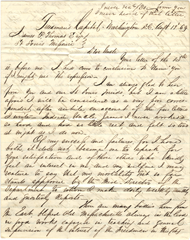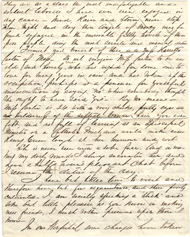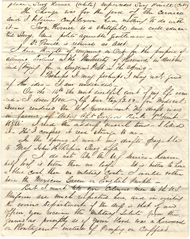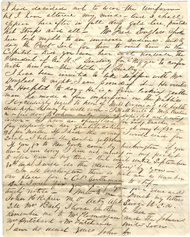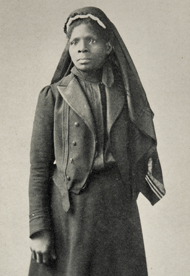Curator’s pick!
Jill L. Newmark, the curator of the Binding Wounds, Pushing Boundaries: African Americans in Civil War Medicine exhibition, regards this four-page letter from John H. Rapier, Jr. as one of her favorite primary source documents. She says that "the perspective and social commentary of an African American [Dr. Rapier] during that time makes this a unique document." Read this letter or its transcript to discover how Dr. Rapier shares his perspectives on his work as a military surgeon, the state of the Union, and the changing place of African Americans in society.
Letter from Dr. John H. Rapier, Jr. to his uncle James P. Thomas, Esq., St. Louis, Missouri, from Freedmen's Hospital, Washington, D.C., August 19, 1864 (transcript available)
Courtesy Moorland-Spingarn Research Center, Howard University

Looking into History
Who were some women and men caring for the wounded African American soldiers during the American Civil War? View the following three photos and one illustration closely. Afterwards, explore the Nursing the Wounded section of the exhibition to find an answer to that question.
African American hospital workers, including nurses can be seen on balconies and in the yard of a hospital in Nashville, Tennessee, July 1863. Both men and women served as nurses as well as cooks and laundresses in hospitals throughout the Union during the Civil War.
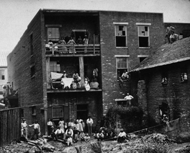
African American hospital workers, 1863
Courtesy National Archives,
Washington, D.C.
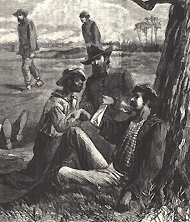
Harper's Weekly,
August 20, 1864
Courtesy Harper's Weekly
An illustration of an African American man assisting an army medical officer with an injured soldier on the battlefield.
Black and white photograph captures Susie King Taylor standing in a uniform wearing a head covering. She was hired by the 1st South Carolina Colored Volunteers and worked for more than three years nursing wounded soldiers, as well as teaching those who could not read or write.
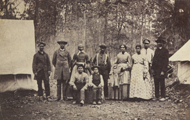
Contraband who served with the 13th Massachusetts Infantry c. 1863-1865
Courtesy Massachusetts Commandery Military Order of the Loyal Legion
and the U.S. Military History Institute
African American women and men served as nurses, hospital workers, laundresses, cooks, and laborers during the Civil War. Images of African Americans serving during the war are rare making this one unique. Its depiction of a large group of contraband working for a Union Army regiment puts a human face on the contributions of African Americans to the fight for freedom.
Last Reviewed: October 7, 2011




